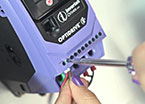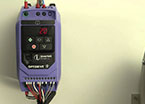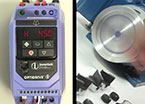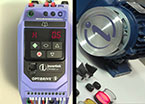Selection and Installation of Variable Frequency Drives
Variable Frequency Drive Selection and Installation
Let’s look at how to choose and install a drive. You can choose a drive based on the power and voltage of the motor you are using. Make sure the motor is correctly configured (star or delta) to match the supply. Check the full load current of the motor and the variable frequency drive; sometimes you can choose a lower power drive; it’s the current that matters.
Full ArticleBraking and Regeneration
Normally the power in a variable frequency drive system flows from the drive to the motor and then to the load. However, sometimes the energy can flow in reverse. This is called regeneration. If a crane is lowering a load, or if a conveyer is going downhill, then regeneration can occur. If you try to decelerate a high inertia load such as a fan, then regeneration can also happen. When the energy goes back to the drive, it cannot go back to the supply – the rectifier diodes block this, so the DC link capacitor absorbs the energy as a rising voltage. If the voltage gets too high the drive will detect this and trip on ‘overvoltage’. When this happens the drive stops supplying magnetising current to the motor, so the motor no longer regenerates, but coasts to a stop in its own time.
Full ArticleCranes, Hoists and Elevators
When Cranes lift a load, they are doing work; when they lower a load, the energy is coming from the load to the drive, that is, the load is regenerating. An elevator usually has a counterweight, so it is not always clear if the system is motoring or generating. These applications nearly always work with a drive fitted with a braking resistor to absorb the regenerative energy.
Full ArticleSafety Inputs and Safety
Safety Regulations are now an important part of engineering design and installation. Rules and standards must be met; ignorance is not an acceptable defence.
Full ArticleBraking and Stopping
A variable frequency drive will slow down a motor by reducing the output frequency; the drive can also simply switch off and allow the motor to stop in its own time. DC injection can also be used to produce a braking and holding torque, but for real stopping power an electromagnetic brake is needed. These are usually built into the motor, and are powered by DC – often from the supply via a rectifier unit. They are energised to release the brake, so with a loss of power the brake will engage. If we are using a variable frequency drive with a brake, we need to ensure that the brake is released and engaged at the right time.
Full ArticleSupplies and Supply Problems
Variable frequency drives need power from the mains. They generally can’t produce an output voltage that is higher than the input voltage, so if you only have 230V supply, you’ll only get 230V out. Make sure your motor is connected correctly for the supply you have; many motors can be configured for different voltages (e.g. 230/400 or 400/690).
Full ArticleRelays and Analogue Outputs
A variable frequency drive nearly always includes a relay and an analogue output for monitoring purposes. The E3 has one relay and one analogue output, the P2 and Eco has two of each. Relay are useful because they give a simple on or off function that is isolated from the drive electronics, so there are fewer problems with interference. However, if you are switching an inductive load like a contactor or brake, you must fit suppression components to prevent interference and damage to the relay contacts. Always check the relay rating as well; Invertek relays are mains rated, other manufacturers may not be.
Full Article




















